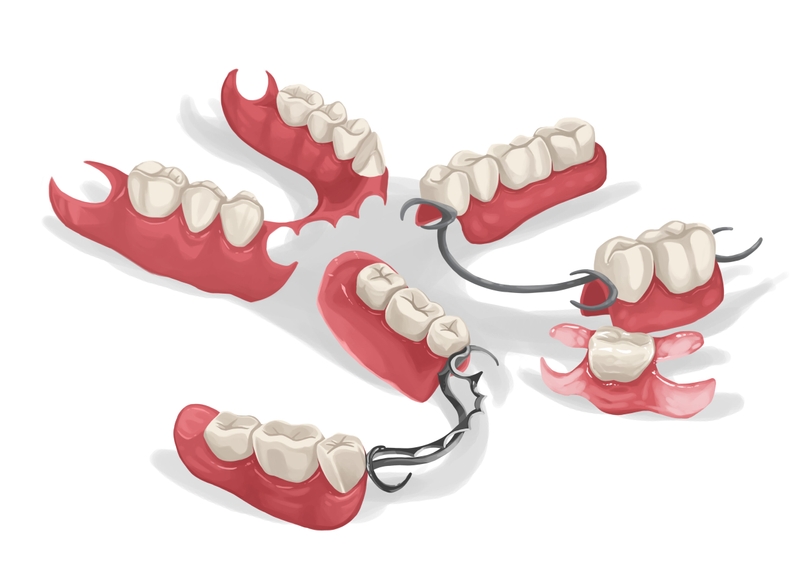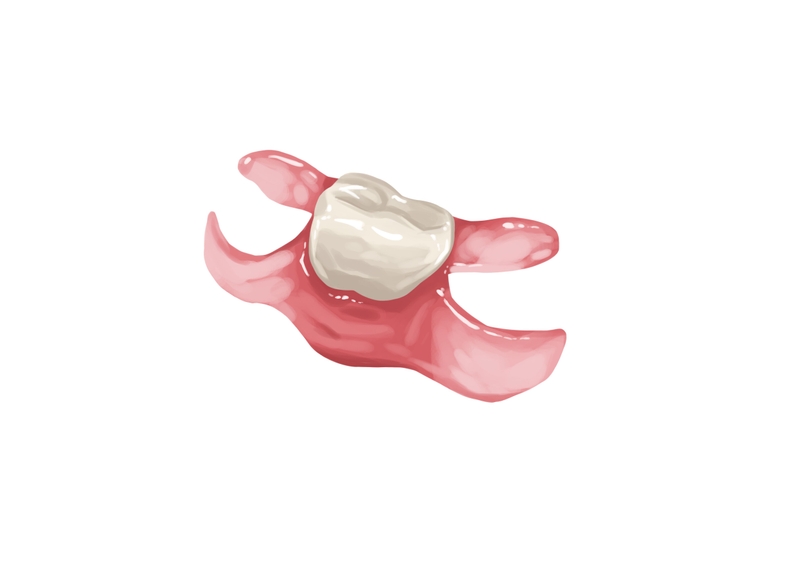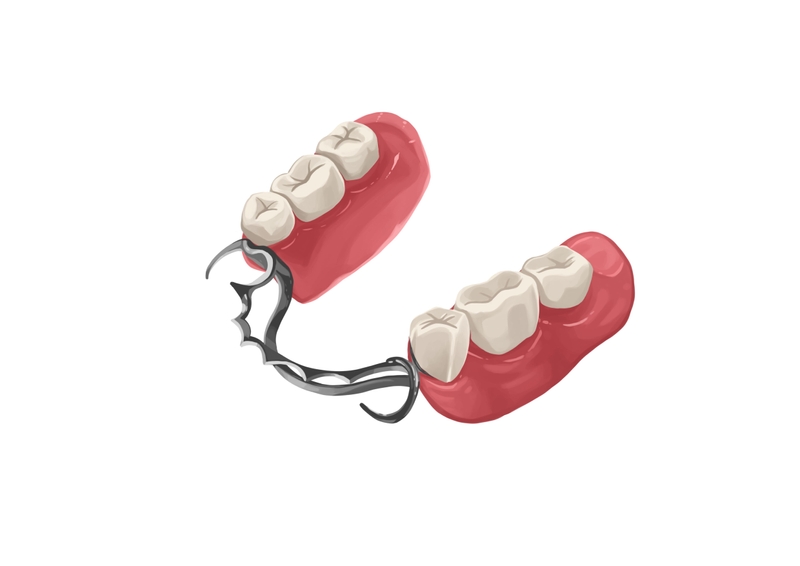- Partial dentures are removable plates with one or more false teeth attached. They fill the gaps when some teeth are lost.
- Acrylic partial dentures are the least expensive option, but also the most brittle, and can be harmful to adjacent teeth. Flexible partial dentures offer excellent aesthetics, but they cannot be repaired if they break.
- Cast metal partial dentures are less bulky and fit better in the mouth, but are more expensive.
Use Authority Dental to book an appointment for the affordable dentures in your city, or get a dental plan and save up to 60% on all dental procedures, including dentures.
Which type of partial dentures is the best for you? Here's everything you need to know.
Partial denture definition
A partial denture is a removable plate with one or more false teeth attached. It is fitted when some teeth are lost. The false dentition fills in the gaps.
They often have clasps that hook onto remaining teeth. This way, the prosthesis stays in place as you go about your day. Precision attachments might be added for extra support and sturdiness.
Depending on what teeth you are missing, partial dentures can be made for just the back or front teeth. A combination is also possible.
Harry Lee, DMD, warns: "When a patient needs to replace a few missing teeth, a partial denture is often the best solution. However, not all partials are created equal, and the choice between them comes down to a fundamental difference in engineering and how they distribute pressure in your mouth."
Partial denture types
There are different materials to choose from. They heavily determine the cost of partial dentures. Your dentist is the best person to ask which is right for you. The most important factors that impact this decision are the number of remaining teeth and your available budget.
Acrylic partial denture

Picture by Authority Dental under CC 2.0 license
The most popular material for partial dentures is resin plastic. This material can be dyed to match your gums. Acrylic dentures belong to the cheaper types. You can even have teeth added if you lose more. More acrylic is bonded to accommodate the addition. Acrylic partial dentures can last 5-8 years.
The downside is that they break easily, so you may have to replace them more often. Plastic dentures may also require adhesives, increasing running costs. They sometimes have metal clasps, but most commonly, plastic partials are embedded in the resin and can break off.
Acrylic puts much pressure on your gums. This can lead to irritation, soreness, and even lesions. Some patients have trouble with gagging. In the case of upper dentures, the acrylic covers your entire palate.
Most affordable partial dentures
Color can be matched to the existing gums
Break more easily
Adhesives are sometimes necessary
Cover your entire palate
Patients often have to endure gagging with this option
Can damage neighboring teeth
Flexible partial denture

Picture by Authority Dental under CC 2.0 license
Flexible partial dentures are made from thermoplastic materials. The most popular ones are nylon and Valplast. With proper care, patients can wear these for up to 15 years.
This type does not require adhesives or metal clasps, as it adheres to the gums on its own. The structure is less stiff and rigid than acrylic dentures.
The material is clear and gums are visible, providing great aesthetics. Flexible dentures are also very quick to produce and less expensive than metal-cast ones.

No need for adhesives or visible clasps
Flexible structure
Not bulky
Clear material for better aesthetics
Quick to produce
Less expensive than metal partials
If they break, they can't be fixed
Cast metal partial denture

Picture by Authority Dental under CC 2.0 license
Metal partial dentures are lighter and more durable than plastic ones. It is easier to support them with clasps and adjacent teeth. Your palate does need to be covered. Appreciating fine dining is a lot easier because they stay in better and trap less food.
Cobalt chrome is most commonly used. It provides an outstanding balance between toughness and flexibility. Metal partial dentures are unlikely to fracture even in trauma. They can last up to 10 years.
The base is metal covered in plastic. Metal parts may be visible in your mouth. The downside is that this option is usually quite expensive. What makes up for this is that more teeth may be added along the way.
Lightweight
Less bulky and more comfortable in the mouth
Palate is not covered
Won't fracture due to trauma
Can last many years but usually used for a few months
Base is covered with plastic for better aesthetics
More expensive than plastic
Metal clasps may be visible in the mouth
Interim partial denture

Picture by Authority Dental under CC 2.0 license
Interim partial dentures are often made from acrylic. They are designed for the interim period after you have your teeth removed and before you receive your permanent denture.
This type provides a quick solution if you do not want to go without teeth. It can be a good solution if you need to repair dentures and require a temporary denture replacement. Designed to be temporary, you should not wear them for longer than a few months.
Fake dentition can be placed in the same position as your natural tooth was. Interim dentures also provide occlusal support and make eating and speaking easier.
Does not need relines or adjustments
Can work as a spare after you get your definitive denture
Generally not covered by insurance and must be paid for put-of-pocket
Temporary solution
If you decide a partial denture is not the right choice for you, you can explore some alternatives. Those include dental implants, denture implants, bridges, or complete dentures.
FAQ
What is the best type of partial dentures?
This depends on the patient's needs and the condition of the remaining teeth. Metal cast dentures are the most expensive but also the most durable. On the other hand, acrylic dentures are the most common.
How soon after extraction can I get a partial denture?
It may take up to 12 weeks to get a partial denture after a tooth is removed. This may be shorter if your mouth heals quickly. The cast, however, must often be done when the situation in your mouth settles.
How long does it take to get partial dentures?
If you do not need any extractions, getting a partial denture can take 6 weeks to 3 months. This may take longer if you have conditions such as periodontitis, which should be treated before a dental impression is taken.
Harry Lee, DMD
I often explain it with this analogy: a traditional partial denture with a metal framework is like a well-designed bridge. It has a rigid, strong skeleton that rests on your stable, healthy teeth. When you chew, the biting force is transferred through that metal frame to the strong teeth, which are designed to handle it. The gums underneath are largely protected.